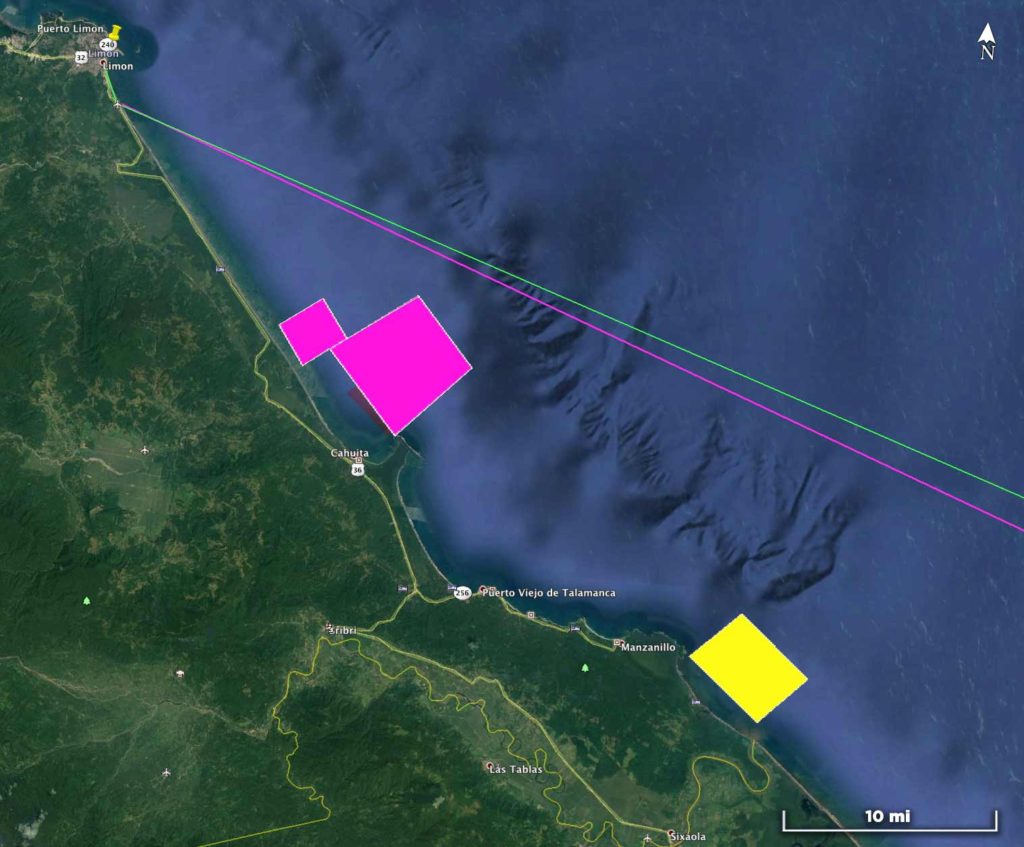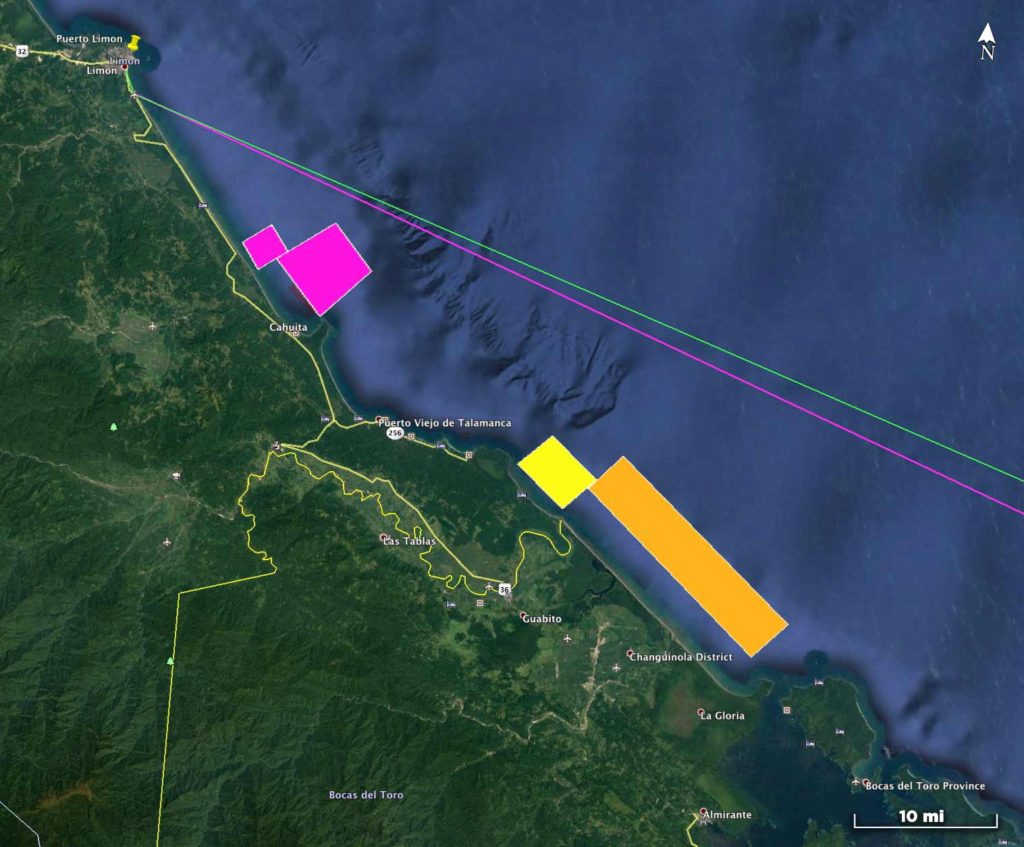EXPEDITIONS
IN SEARCH OF RESULTS

First expedition:
10/15 to 11/05, 2015
Hypothesis name: “Cahuita witnesses”
An unidentified person traveled 42 kilometers on the day of the accident to report in Puerto Limon that they had seen an airplane with the engine on fire, crashing into the sea from “Playa Negra” close to the town of Cahuita.
Approximately 6,500 hectares of the submarine platform were scanned in front of Playa Negra, Cahuita.
He must have probably seen the Hercules C130 from the USAF during the SAR operation that morning of 11/3/65.

Second expedition:
4/15 to 5/2, 2016
Denominación de la hipótesis: “Sr. Castañeda”
On the following day of the accident, this local made a report, confirming having “heard” a four-engine plane flying in circles at a time like the accident on the mouth of river Sixaola (border between Panama and Costa Rica)
3,500 hectares of the Costa Rican sector were scanned.

Third expedition:
4/15 to 4/30, 2017
Hypothesis name: “Last radio communication”
According to Captain Alvaro Protti’s written testimony, of company LACSA, who on November 3 morning was flying from San José de Costa Rica Airport to Miami airport, Florida, there were several radio communications between his plane and TC48. The latest communication was at 7:05 a.m. when TC48 informed that it was flying “approximately on one side of Bocas del Toro, low and by instrument flying rules (IFR). We may assume that the last communication was immediately before the accident outcome. With the aid of navigation and air accident experts, we estimated the speed reached by TC48 from Howard Base, where it took off at 5:48 a.m., and Mike 5, where they reported to be at 6:27 a.m. At 6:36 a.m., they communicated an emergency with engine number 3, which was on fire, and we assume they feathered immediately that engine.
With the same experts, we estimated the speed reached by C54 with three engines at 84% of its power, approximately 130 knots, and we calculated a distance of around 65 NM, which they could have traveled on those 29 minutes of flight.
At the same time, with the aid of oceanographers of the University of Miami, we made a deep analysis of the elements collected from the sea, particularly life jackets during 96 hours in reverse.
Both hypotheses, by chance, coincide on a zone where around 6,000 hectares were scanned.

Fourth expedition:
4/3 to 4/17, 2018
Hypothesis name: “Life jackets drift”
This hypothesis of impact search was based on the remains of TC48 life jackets, which were recovered from the sea 4 days after the accident.
The Air Force and the United States Coast Guard Service registered the time and place where each collection was made from November 7 to 9, 1965.
Based on this information, jointly with Mr. José Rivera, oceanographer of NOAA, Dr. Maria Josefina Olascoaga, from the University of Miami, and Captain Marcelo Covelli, we decided to go ahead with a launching project of Drifters in the Caribbean Sea in order to attempt to replicate the life jackets adrift for 96 hours.
On 10/31/2017, and thanks to the Costa Rica Coast Guard National Service’s collaboration and oceanographer Jose Rivera, these elements were thrown into the sea:
on the same moon phase than on 11/03/1965 in 3 different places to replicate the original TC48 life jackets adrift.
Thanks to the invaluable collaboration of NOAA, we received 3 Drifters with GPS, having drogues of 10 meters in length, and 10 MaeWest-type life jackets (like those used by the TC48) as a donation for this project. The drifters had a GPS localization device so that they could be tracked by satellite. 8,074 hectares were scanned.
